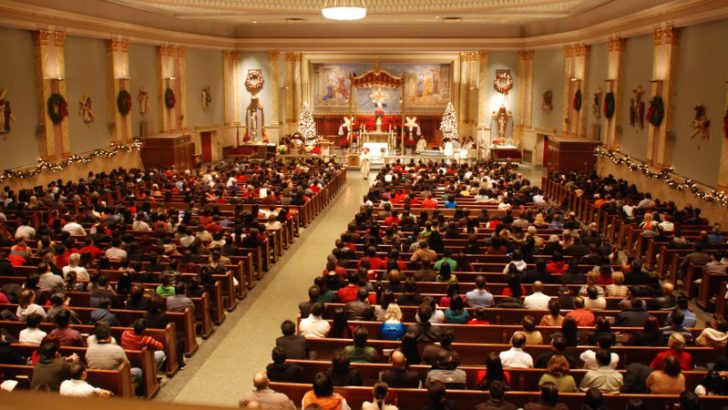The Notebook
What is a church for? Those buildings we go to Mass in Sunday after Sunday, what is their purpose? Are they for our use, to be disposed of when no longer necessary, or are we their servants, with the perpetual job of keeping them all in perfect trim, come what may? Do the buildings determine what goes on in them, or can we adapt them as things change? Are we in charge, or the buildings? Think about it.
I was at a solemn Mass recently, in an older city-centre church, where the choir sang beautiful hymns in magnificent harmony. I heard a whisper about how perfectly suited this kind of singing was to the church. Folk music or gospel just wouldn’t be appropriate in so antique and highly-esteemed a building.
I had heard similar arguments, 35 years previously in Maynooth. As students, we occasionally celebrated college liturgies in the exquisite College chapel. Four-part harmony accompanied our liturgies, springing from a belief that folk music just wouldn’t suit the architecture: the dissonance would be too great. Folk musicians had to worship elsewhere.
Those sentiments give rise to these musings. Do buildings control us, or serve us?
Which is the most important feature of a parish, its notable structures or its people? St Paul answers it for me (in 1 Corinthians) when he declares that the “temple of God is sacred – and you are that temple”.
“God’s work of art” is another of his titles for the community of the faithful. In other words, the people are ‘the Church’ before any building. This community thus makes the decisions about the building in which it meets.
We Irish Catholics know how non-essential church buildings are. In Penal Times, we had none: our Masses were celebrated in the open countryside. Only in the 19th Century did new Catholic churches appear, their grandeur contrasting with the humility of the Mass rocks (and often constructed to tower over buildings used by rival denominations!).
Do these 200-year-old buildings dictate what takes place in them for all time, or does their use derive from the community which gathers in them? What do you think?
This topic is set to vex the Irish Church severely in the next 50 years, when it becomes obvious how over-supplied with churches we are and how costly their maintenance will be. Difficult decisions will ensue.
Purpose
For me: I believe I was not ordained for the purpose of keeping any church or churches open, but rather to preach the word of God, using churches when necessary.
These buildings are to serve the community which gathers to pray in them, not to be a millstone round the neck of a parish. This will inevitably mean that not every church building will be used as often as it is now, and some will close altogether.
As long as the mission of the Church continues, as long as God’s Word is preached and the sacraments celebrated, who can complain if buildings surplus to requirements are lost.
*****
Standing outside the church building, the celebrant spots two visitors, leaving after Mass. They compliment his presiding style and add, looking up the magnificent edifice towering over them: “You have a lovely church, Father.” The priest looks at the familiar faces of his parishioners streaming past. He spots people of all ages and levels of talent and skill and sees in them his church. So with a touch of “divilment”, the priest replies: “My church is indeed lovely – and the building’s nice too.”
— From How to Survive Working in a Catholic Parish by Diana Klein & Bernard Cotter (Redemptorist Publications 2016).
*****
Old insight worth considering
The solemn liturgy I mentioned was the funeral Mass for Canon Liam Leader. Liam was ordained in 1953 and spent nearly 30 years in St Patrick’s parish in Cork city. An avid reader and researcher, he was ever seeking — and teaching. I worked with him for four years and remember once asking for an insight into St Catherine of Siena (for my morning Mass).
His reply was expansive: “What I would really like to see is a feminist reading of the Gospels.”
Not bad for a pastor in his mid-70s: I hope I am as open to new insights if I see his age.



